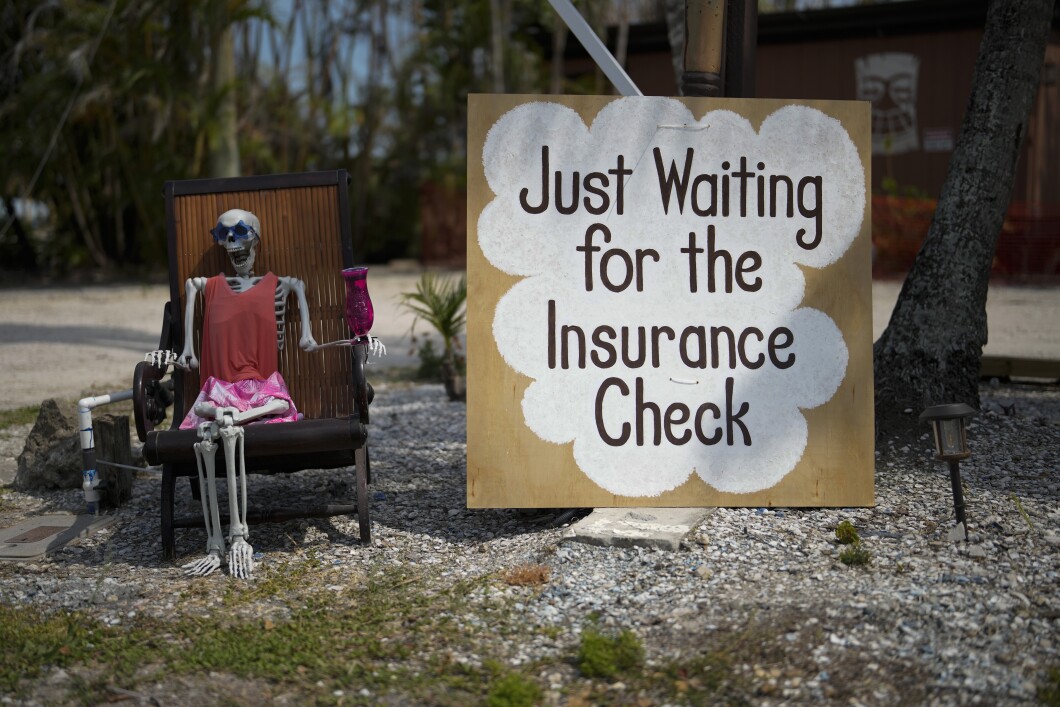
The U.S. home insurance market is careening toward disaster as policy premiums soar and private insurers exit high-risk states, threatening to affect millions of homeowners nationwide.
In the last 12 months, major insurance providers in California and Florida have either exited the states completely or announced plans to drastically pare down their coverage, citing exposed risk to natural disasters such as wildfires, hurricanes, and floods, and, in California’s case, a challenging reinsurance market. But experts say the two states are just a microcosm of a problem that’s beginning to play out nationally as natural disaster losses rise and put millions more people at risk.
BIDEN ADMINISTRATION OUTLINES RULES FOR INSTANT EV REBATES TO BOOST SALES
Speaking before Senate lawmakers last month, the American Property Casualty Insurance Association’s vice president of government relations, Nat Wienecke, said the uptick in natural disaster losses has pushed up the cost of property insurance in many parts of the United States, forcing some insurers to rebalance their risk and reduce their exposure, including by raising premiums or pulling out of higher-risk states altogether.
“Reducing our risk must continue to be a shared priority among us all, and we must work together to adapt and increase our resilience in the face of climate-fueled disasters,” she said.
In California, nonrenewal of home insurance policies spiked by a whopping 30% in 2021 compared to the previous year, according to the most recent data from the California Department of Insurance. In Florida, meanwhile, homeowners are shelling out insurance premiums four times as high as other states amid a mass exodus of at least six major property insurers in the last two years.
As a result, many policyholders have been driven into the arms of so-called insurance of last resort, or state-run insurance programs designed to protect individuals considered too high-risk to obtain private coverage.
In Florida, the state-run program, Citizens Insurance Agency, has now become the largest single insurer in the state, with its number of policyholders growing from just 500,000 in 2016 to 1.3 million today, a 168% jump.

These programs are limited, high risk, and typically only cover those who can prove they’ve been denied coverage or faced a rate increase of more than 20% by their current provider. But they are also increasingly serving as a “relief valve” for states that have seen an uptick in natural disasters, including California, Louisiana, and Texas, according to the American Property Casualty Insurance Association.
Experts with the nonprofit group First Street Foundation predict not only that the frequency and severity of climate change-fueled natural disasters will increase but that the number of states and properties considered at risk will balloon alongside it as well.
There’s a “whole bunch of states where prices are going way up, insurance companies are pulling back, and coverage is getting hollowed out,” Michael DeLong, a research and advocacy associate at the Consumer Federation of America, told the Washington Examiner. “We think it’s in large part due to climate risk and the increasing number of big disasters and more extreme weather events.”
“Most major companies, the ones with substantial revenue and the capital to weather tough situations, have stopped writing coverage in Florida and Louisiana and California,” he said.
Certain Gulf Coast states, including Louisiana and Texas, have seen substantial rate increases due to their hurricane exposure, and DeLong says he expects premiums to rise to a lesser extent in other parts of the country as well. “This includes like places like the Midwest, where you’re getting more unusual storms, [and] places like Kentucky and Appalachia, where you’re getting more unusual rain events,” he said.
Home insurance premiums in the U.S. are on the rise. Between May 2021 and May 2022, average U.S. premiums increased by an average of 21%, according to data published by the independent insurance broker Policygenius. National rates are roughly 35% higher compared to just two years ago,
This year, private insurers such as USAA and Farmers increased homeowner insurance premiums by double digits, raising costs for policyholders in more than 40 U.S. states by 14.7% and 14.8%, respectively.
It’s only in recent years that the companies began to realize the more pervasive threats posed by climate risk and extreme weather events, including the hefty price tag that comes alongside them, Delong said. “So they’re now pricing that into a lot of their calculations, and as a result, costs are going up,” he said.
First Street Foundation estimates that 39 million U.S. homes are currently insured at artificially suppressed prices (compared to the actual risks they face), including at least 6 million homes that are covered by last-resort insurance policies.
CLICK HERE TO READ MORE FROM THE WASHINGTON EXAMINER
But as climate-related risk (and damages) continue to rise, the authors predict, the insurance market will be forced to majorly readjust its rates, sending premiums through the roof and, ultimately, popping what it describes as a “climate insurance bubble.”
“The over-reliance of property owners on the state-run insurers of last resort is a big flashing sign that standard practices in the insurance market cannot keep up with our current climate reality,” Matthew Eby, First Street’s executive director, said in a statement.





